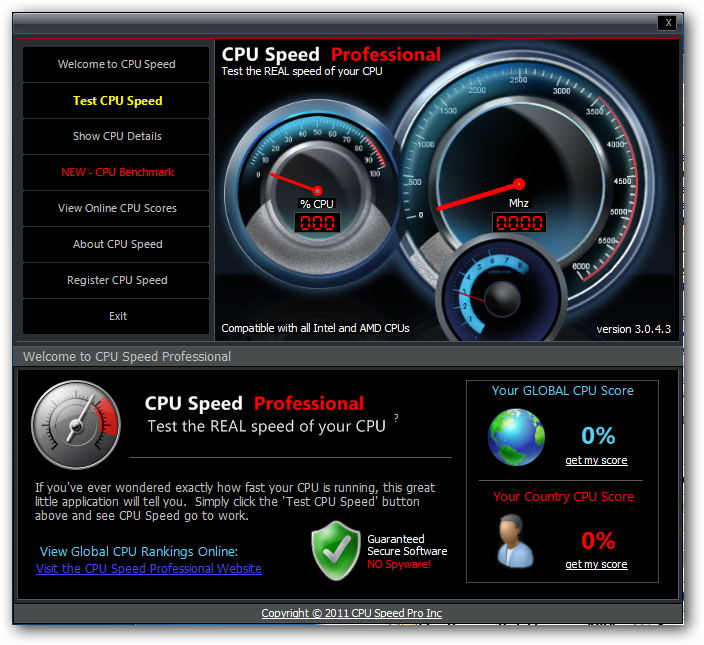
- #Cpu speed accelerator 6.2 serial drivers
- #Cpu speed accelerator 6.2 serial driver
- #Cpu speed accelerator 6.2 serial skin
#Cpu speed accelerator 6.2 serial driver
Intel Core i 5th generation or older.ĬPUFreq driver which utilizes the ACPI Processor Performance States. Starting with kernel 5.7, the intel_pstate scaling driver selects "passive mode" aka intel_cpufreq for CPUs that do not support hardware-managed P-states (HWP), i.e. This driver implements a scaling driver with an internal governor for AMD Ryzen (some Zen 2 and newer) processors. This driver implements a scaling driver with an internal governor for Intel Core (Sandy Bridge and newer) processors. The amd_pstate CPU power scaling driver can be manually enabled if it is supported, first check if your processor and motherboard support CPPC: lscpu | grep "cppc", then enable loading the amd_pstate module on boot.Ĭpupower requires modules to know the limits of the native CPU:.If you encounter a problem while using this driver, add intel_pstate=disable to your kernel line in order to revert to using the acpi_cpufreq driver. intel_pstate may run in "passive mode" via the intel_cpufreq driver for older CPUs. The intel_pstate may ignore the BIOS P-State settings. This driver is currently automatically used for Sandy Bridge and newer CPUs.
#Cpu speed accelerator 6.2 serial drivers
This driver takes priority over other drivers and is built-in as opposed to being a module.

The GUI is based on GTK and is meant to provide the same options as cpupower. You may want to enable rvice to start at boot.Ĭpupower-gui AUR is a graphical utility designed to assist with CPU frequency scaling. This configuration file is read by a bash script in /usr/lib/systemd/scripts/cpupower which is activated by systemd with rvice. The configuration file for cpupower is located in /etc/default/cpupower. The package is not required to use scaling, but is highly recommended because it provides useful command-line utilities and a systemd service to change the governor at boot. Turbostat can display the frequency, power consumption, idle status and other statistics of the modern Intel and AMD CPUs.Ĭpupower is a set of userspace utilities designed to assist with CPU frequency scaling. It can be launched from a Terminal with the command i7z or as GUI with i7z-gui. I7z is an i7 (and now i3, i5, i7, i9) CPU reporting tool for Linux. The associated systemd unit is rvice, which should be started and enabled. Dell Latitude 3420) this daemon has been reported as unlocking more performance than what would be otherwise available.
#Cpu speed accelerator 6.2 serial skin
If there is a skin temperature sensor in thermal sysfs, then it tries to keep skin temperature under 45C.

If the latest drivers are not available, then the daemon will revert to x86 model specific registers and the Linux "cpufreq subsystem" to control system cooling.īy default, it monitors CPU temperature using available CPU digital temperature sensors and maintains CPU temperature under control, before hardware takes aggressive correction action. thermald can also be used for older Intel CPUs. This daemon proactively controls thermal parameters using P-states, T-states, and the Intel power clamp driver. Thermald is a Linux daemon used to prevent the overheating of Intel CPUs. 4 Intel performance and energy bias hint.2.2.3 Setting via x86_energy_perf_policy.2.2.2 Setting via sysfs (Other scaling drivers).2.1 Setting maximum and minimum frequencies.


 0 kommentar(er)
0 kommentar(er)
